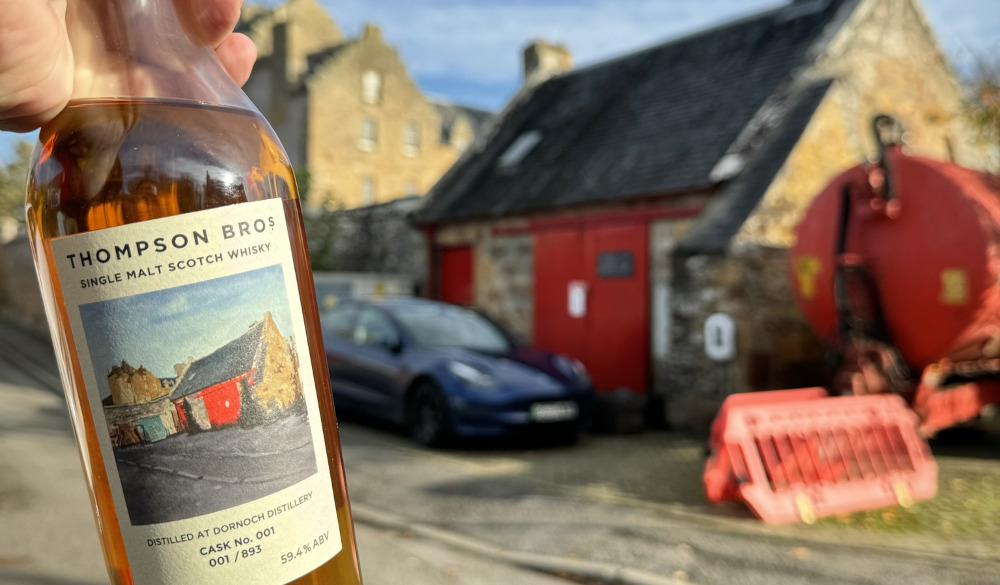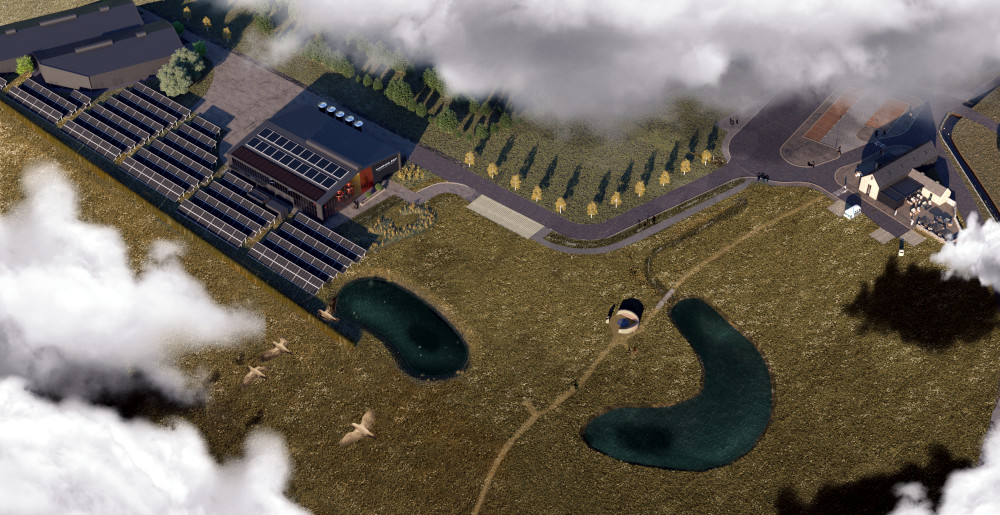When Thompson Bros CTO and co-founder
Simon Thompson talks
about his distillery’s sustainable expansion
plans, he knows they
won’t change the industry overnight — but just as sustainability pioneers such
as Aspen Vodka are doing
here in the US, they could be setting an important example for small-scale
distilleries across Scotland.
“We’re maybe part standard-bearer, part guinea pig,” Thompson told Sustainable
Brands® (SB). “We want to show not just that this works but it’s also
reliable.”
Simon and his brother,
Phil, have a small but
thriving business in the northern seaside town of Dornoch that includes a
hotel and the Dornoch distillery — which produces gin, its own whisky and blends
for other brands. Currently, the Thompson Bros facility’s maximum capacity —
producing 20,000 liters of spirit annually — is a sliver compared to even the
smallest labels from a major conglomerate such as
Diageo; its smallest brand,
Brora, produces
800,000 liters
annually.

The present: Dornoch Distillery | Image credit: Thompson
Bros
However, Thompson Bros’ size allows the distillery to be nimble and flexible —
and the company is exploring new avenues of growth and self-sufficient,
energy-saving, eventually carbon-neutral production
methods that could
set a new bar for the industry.
On Monday, the company surpassed an initial £1.8 million crowdfunding
effort
meant to help fund an expanded facility, which will boast a host of efficiency
features and a twenty-fold increase in capacity of up to 400,000 liters of
spirit annually. According to a press release, every aspect of production except
malting will be handled on-site — from liquid creation to blending, bottling,
labelling and shipping. The raise, which is still open, comes in tandem with a
private Series A run of £5 million that the company expects to complete by the
end of April or early May.
The highlight of the expansion is a fully electrified distillery that can run on
self-produced renewable energy — primarily generated from a large, solar-powered
heat pump — which could increase resilience and dramatically lower costs for the business. The plan is to top-size production in the summer when the sun is
strongest and scale back on production in winter.
“In combination with our own patent-pending innovations,” Simon coyly added, “we
can improve distillery energy recapture and reduce energy expenditure on
cooling.”
In 2019, the Thompson brothers converted their original distillery from gas
power to electricity — experimenting and refining methods to reduce the energy
needs and carbon output of their existing production. The new Struie
facility will build on
the successes of that transition, and also incorporates lessons learned from a
visit to Ireland’s Ahascragh
Distillery
— the first distillery to use heat pump technology.
“They’re in a similar ballpark, in terms of the volume we want to do,” Simon
said. “(After visiting), we went over a few fine details with our engineers and
had to better understand thermal energy storage.”

The future: Struie Distillery | Image credit: Thompson Bros
The Thompson brothers ran a number of estimates and analyses to understand
running averages of kilowatt hour per liter of produced alcohol
(KwH/LPA), a widely accepted measure of distillery energy efficiency.
According to the latest available Scotch Whisky Association data, an average
Scotch distillery has a rating of 8 KwH/LPA, with 7.5 KwH/LPA considered “good.”
A pilot
project
at Chivas Brothers Distillery in Speyside is the current national
leader, with a rating of 3.89. Ahascragh is rated at 3.69. The Thompsons
anticipate their new distillery could reach a 3 KwH/LPA rating, potentially
going as low as 2.56.
Even without another pound of fundraising, the brothers can start construction
as soon as this fall. Simon told SB they will start on access roads, warehouse
construction and foundations with an expectation of being operational by the end
of 2026. Initial production should reach 250,000 liters of spirit with potential
to soon ramp up to 400,000.
In addition to
solar,
the distillery will draw power from wind and excess renewable power from the
regional energy supplier when natural energy sources are less reliable (likely
during winter). Simon says the project will complement other ongoing Thompson
Bros sustainability initiatives, such as the use of majority organic heritage
barley in its spirits.



